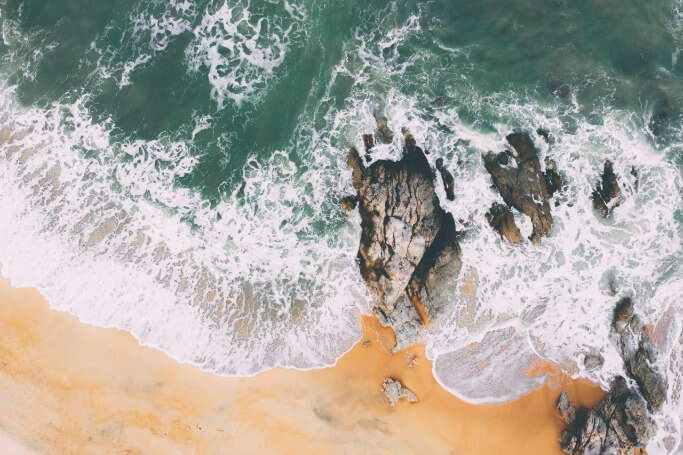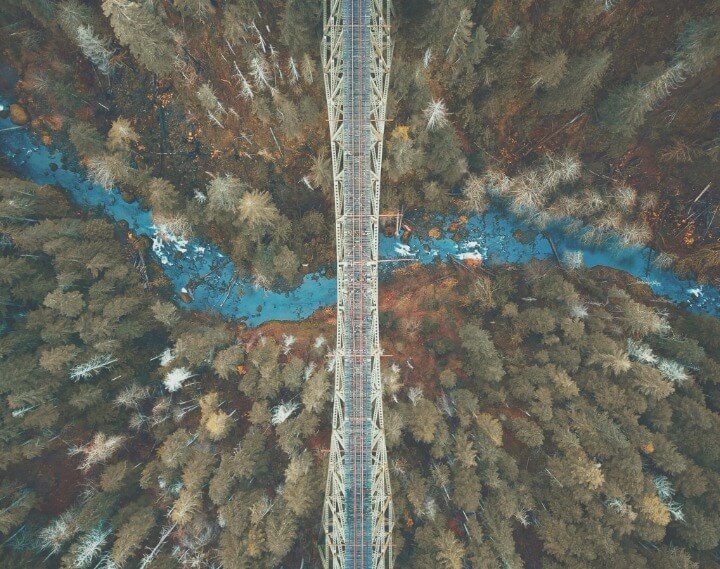Excerpt from Fresh Banana Leaves: Healing Indigenous Landscapes through Indigenous Science by Jessica Hernandez published by North Atlantic Books, copyright © 2022 by Jessica Hernandez. Reprinted by permission of North Atlantic Books.
The bottom-up approach allows conservation initiatives and projects to come from within the community. Contrary to the top-down approach, it centers the communities from the start as it does not assume or introduce demands, commands, and practices that are oftentimes given without building rapport or having experience living within the environments scientists are trying to protect and conserve.
I have practiced this bottom-up approach throughout my graduate career, and I think that given that I understand from firsthand experience the harm research can do toward Indigenous communities, I have become mindful of how I, too, practice research. For my master’s thesis, I had built relationships with the local Coast Salish peoples, and I started asking them what kind of project would benefit them. They discussed coding environmental justice cases so that people in the state became more aware of the environmental injustices they were facing. This is what led me to completing my thesis project on coding environmental justice cases they reported to me. These cases allowed me to critique how environmental justice is denoted in policies that continue to dismiss the cultural values that are important for Coast Salish peoples. For my dissertation, I also did the same thing, but in this case with the urban Indigenous community of Seattle. My strong relationship and immersion in the urban Indigenous community allowed me to ask them what kind of environmental project they could benefit from. This led me to the Daybreak Star Indian Cultural Center.
The bottom-up approach is also an important step when conducting community-based participatory research (CBPR). CBPR is defined as a collaborative approach to research, especially in the health fields that tend to work mostly with communities. CBPR can become congruent with Indigenous communities because it attempts to dismantle some of the impacts of research and settler colonialism. It allows Indigenous peoples to serve as the leaders and consumers of the research projects meant to benefit their communities rather than just serving as research subjects. It also allows for the creation of an effective collaboration and destruction of power differentials between the researchers, community members, and relevant organizations.
CBPR moves away from the top-down approach Western research follows toward a bottom-up approach that some Indigenous communities implement in their governance. By positioning research into this bottom-up approach, research ends up demanding less work from Indigenous peoples and empowers them to reclaim their autonomy. CBPR allows us to center and uplift the communities’ voices despite having to work with some organizations that continue to follow the Western scientific approach.
However, it is important to understand that CBPR is still conditioned through Western education and research because CBPR still allows for the integration of Western research methods, which can create an Indigenous context and not necessarily follow Indigenous methods. Since CBPR can also be practiced and implemented by non-Indigenous peoples, an Indigenous context is created; non-Indigenous peoples become the voice for the Indigenous community they are working with and speak on behalf of them. In order for CBPR to be modified for Indigenous communities, I identified six principles during my doctoral degree to incorporate into CBPR. These principles were identified through my extensive trajectory in conducting community-based work that oftentimes was not done for academic or research purposes.
1. Follow and create fluid and dynamic approaches that do not follow the linear research method. This means removing your work from always following the scientific method. It is important to ensure that Indigenous communities and people are not treated like test subjects, because this is a form of colonization that has been used against Indigenous communities. They should be informed of every step and be allowed to sit at the table where decisions are being made, not just informed of the decisions once they are made.
2. Respect tribal sovereignty and Indigenous autonomy. It is up to the Indigenous communities to decide what research and work is allowed on their lands and with their communities. In the example of the professor who wanted to introduce MPAs in the state of Washington, he had failed to understand that tribal sovereignty is important for the tribes as it granted them the right to fish salmon and other aquatic native species to the state. Creating an MPA would limit the rights they fought hard to obtain through the Boldt Decision. The Boldt Decision made the state of Washington respect the treaties they signed with tribes and allocated 50 percent of all fish stock (e.g., salmon, shellfish, etc.) to the tribes.
3. Follow Indigenous protocols and their way of being and doing things in their communities. Western science and research does not always align with Indigenous ways of life; therefore, it is important to listen to the approaches and how they want things done in their communities. I often hear from researchers that they did not receive enough community engagement in their projects, and to me this points to the reality that their scientific approaches were not aligned with the communities’ way of being or doing certain things.
4. Respect intellectual property. In academia, we are pushed to publish, and this has created a lot of Indigenous scholarship written by non-Indigenous peoples. If an Indigenous community shares important information or sacred knowledge, it does not become the researcher’s intellectual property, especially if they do not belong to the community. This leads to co-option and theft of Indigenous knowledge.
5. Embrace all Indigenous epistemologies relevant to the community. Western knowledge is not Indigenous knowledge. This means that things are thought through differently by Indigenous communities. An example of this for my Zapotec community is that in order to do any initiative or project in our community, I must first get permission from my elders, in particular our matriarchs. This means that I have to sit within an elder’s circle and listen to what they have to say. Time is nonexistent in our communities and oftentimes these meetings cannot occur over just one or two hours. They can take days or weeks, and researchers must be open to this and understand that the Western notion of time is sometimes something our communities do not prioritize.
6. Be an Indigenous-led project. Researchers need to reflect on why they are leading this project. Based on the researcher’s positionality, it is okay to step back and do the behind-the-scenes work to create an Indigenous-led project. Conservation and the environmental sciences continue to romanticize Indigenous peoples and work with Indigenous communities. However, it is important to sometimes step back and let the project be led by the community. We know that scientists and conservationists have resources that are oftentimes not provided or available to the Indigenous community. This is what a true ally does for our communities. They provide resources and support for the community in the form of a consultation and let the community take the lead on the project. I hear white or non-Indigenous scientists oftentimes mention that they are making an Indigenous person from the community they worked with a coauthor on their paper. My question is always, Why was this paper not written entirely by the community? To me this feels like a way to ignore the reality that some projects are meant to be entirely Indigenous-led with white and non-Indigenous scientists supporting along the way.
Incorporating these principles modify CBPR core principles and make them more relevant to Indigenous community-led research. By doing so, CBPR is conditioned away from colonial Western education and facilitating a project that centers and amplifies Indigenous voices. This allows us to move away from doing research on Indigenous communities toward research led by Indigenous peoples.
About the Author
Dr. Jessica Hernandez (she/e) is a transnational Indigenous scholar, scientist, and community advocate based in the Pacific Northwest. She has an interdisciplinary academic background ranging from marine sciences to forestry. Her work is grounded in her Indigenous cultures and ways of knowing. She advocates for climate, energy, and environmental justice through her scientific and community work and strongly believes that Indigenous sciences can heal our Indigenous lands. In 2020, she became the first alumni from her high school in South Central Los Angeles to receive a doctoral degree. She is the founder of Piña Soul, SPC, an environmental consulting & artesanias hybrid business that supports Black & Indigenous-led conservation and environmental projects through community mutual aids and micro-grants.
Her current research is investigating the role energy plays in addressing climate change impacts, from an environmental physics lens. By formulating energy justice pillars and deriving solutions from case studies that focus on sustainable energy and mitigation strategies (primarily those implemented by Indigenous communities), this research will help physics education recognize the historic and present-day inequities in the energy industry.
She currently holds appointments at Sustainable Seattle (Board Member), City of Seattle’s Urban Forestry Commission, and the International Mayan League (Climate Justice Policy Strategist). Her book, Fresh Banana Leaves: Healing Indigenous Landscapes through Indigenous Science, is forthcoming this January ’22.



